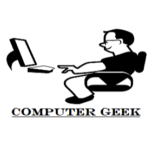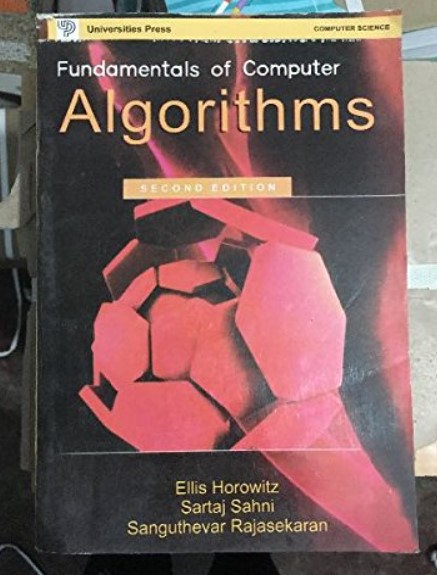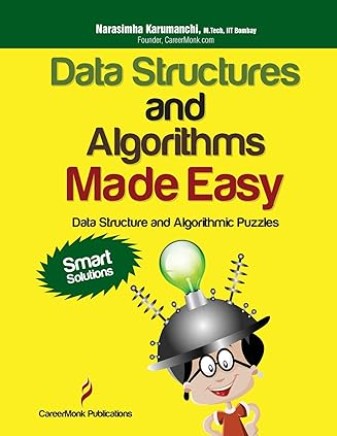Understanding the Divide and Conquer Method
.
The Divide-and-Conquer method is a powerful problem-solving technique frequently used in the field of algorithm design and analysis.
.
Definition
“It breaks down complex problems into smaller, more manageable sub-problems, solves them independently, and then combines their solutions to solve the original problem.”
This approach simplifies problem-solving and is especially beneficial for beginners in the world of algorithms.

.
Working of Divide and Conquer
The Divide and Conquer algorithm follows a straightforward three-step process
1. Divide – The initial problem is divided into smaller sub-problems. This step simplifies the problem by breaking it down into more manageable pieces.
2. Conquer – Each sub-problem is solved independently. This can be done recursively, breaking down sub-problems into even smaller ones until a base case is reached, which can be easily solved.
3. Combine – Finally, the solutions to the sub-problems are combined to obtain the solution to the original problem. This step is crucial as it ensures that the solutions to the smaller problems are integrated correctly to solve the larger problem.
.
Algorithm of Divide and Conquer
1. Divide the problem into smaller sub-problems.
2. Solve each sub-problem independently.
3. Combine the solutions to sub-problems to solve the original problem.
.
Key applications of the Divide and Conquer approach
.
Sorting Algorithms
Merge Sort – Divide the unsorted list into smaller sub-lists, sort them, and then merge the sub-lists to obtain the sorted list. Merge Sort is known for its stability and efficiency, with a time complexity of O(n log n).
Quick Sort – Choose a pivot element, partition the list into elements smaller and larger than the pivot, and recursively sort the sub-lists. Quick Sort is widely used and efficient with an average time complexity of O(n log n).
.
Searching Algorithms
Binary Search – Divide a sorted array into two halves and determine if the target element is in the left or right half. This process continues until the element is found or the search range is empty.
Binary Search has a time complexity of O(log n) and is used for efficient searching in large datasets.
.
Matrix Multiplication
Strassen’s Algorithm – Divide large matrices into smaller sub-matrices, apply recursive matrix multiplications, and combine the results to obtain the final matrix product.
Strassen’s algorithm reduces the number of multiplications and is used in applications like computer graphics and scientific simulations.
.
Closest Pair Problem
Computational Geometry – Find the pair of points with the smallest Euclidean distance in a set of points. Divide the points into smaller subsets, find the closest pairs in each subset, and then merge to determine the overall closest pair. This approach is used in GIS, navigation systems, and computational geometry.
.
Multiplication of Large Numbers
Karatsuba Algorithm – Divide large numbers into smaller parts, perform recursive multiplications, and combine the results to obtain the product. Karatsuba’s algorithm is efficient for multiplying very large numbers and is used in cryptography and computer algebra systems.
.
Fast Fourier Transform (FFT)
Divide and Conquer is employed in the Cooley-Tukey FFT algorithm to efficiently compute the Discrete Fourier Transform. This has applications in signal processing, image compression, and data analysis.
.
Parallel Processing
Divide and Conquer can be used in parallel and distributed computing to break a large task into smaller, independent sub-tasks, which can be processed simultaneously on multiple processors or machines. This is crucial for optimizing performance in various applications, including scientific simulations, rendering, and data analysis.
.
Algorithmic Design
Many algorithm design techniques, such as dynamic programming, can be viewed as specialized applications of the Divide and Conquer approach. For instance, algorithms like the Fibonacci sequence calculation and the Longest Common Subsequence problem can be solved using Divide and Conquer principles.
.
Image Processing
Divide and Conquer can be applied to image processing tasks like image segmentation, edge detection, and noise reduction. It simplifies complex image analysis problems by breaking them down into smaller, more manageable tasks.
.
Data Compression
Various data compression techniques, such as Huffman coding and Run-Length Encoding, can employ Divide and Conquer principles to efficiently encode and decode data.
.
Time Complexity of Divide and Conquer
The time complexity of the Divide and Conquer method depends on the problem and the efficiency of combining the sub-problem solutions.
In many cases, it results in a time complexity of O(n log n), making it highly efficient for a wide range of problems.
.
Space Complexity of Divide and Conquer
The space complexity is determined by the depth of the recursion and the storage required for sub-problem solutions. In general, it has a space complexity of O(log n) for the stack space used in recursion.
.
Advantages of Divide and Conquer
1. Simplifies complex problems by breaking them into smaller, manageable parts.
2. Encourages code reusability by solving sub-problems independently.
3. Efficient for problems with a time complexity of O(n log n).
.
Disadvantages of Divide and Conquer
1. May require additional memory for storing sub-problem solutions.
2. Complex to implement for beginners in algorithm design.
Test Yourself
Q1- Question: What is the primary goal of the Divide and Conquer method?
1. Solving problems sequentially
2. Solving complex problems independently
3. Combining sub-problems randomly
4. Reducing problem complexity
Ans – (2)
Explanation – Divide and Conquer aims to solve complex problems by breaking them into smaller, independent sub-problems.
Q2- Which step in the Divide and Conquer method involves breaking the problem into smaller sub-problems?
1. Divide
2. Conquer
3. Combine
4. Merge
Ans – (1)
Explanation – The “Divide” step involves dividing the problem into smaller sub-problems.
Q3- What sorting algorithm uses the Divide and Conquer method and has a time complexity of O(n log n)?
1. Bubble Sort
2. Quick Sort
3. Selection Sort
4. Merge Sort
Ans – (4)
Explanation – Merge Sort utilizes Divide and Conquer and has a time complexity of O(n log n).
Q4- In the Closest Pair Problem, how are the closest pairs found in subproblems combined to determine the overall closest pair?
1. By using a hash table
2. By using the largest pair
3. By recursively solving smaller problems
4. By sorting the pairs
Ans – (3)
Explanation – The Divide and Conquer approach recursively solves smaller problems and then combines the solutions.
Q5- Which algorithm efficiently multiplies large numbers using Divide and Conquer and is used in cryptography?
1. Merge Sort
2. Quick Sort
3. Karatsuba Algorithm
4. Binary Search
Ans – (3)
Explanation – Karatsuba Algorithm multiplies large numbers efficiently and is applied in cryptography.
Q6- What is the space complexity of Divide and Conquer, concerning stack space used in recursion?
1. O(n)
2. O(log n)
3. O(1)
4. O(n^2)
Ans – (2)
Explanation – The space complexity of Divide and Conquer typically involves stack space and is O(log n).
Q7- Which of the following is an advantage of the Divide and Conquer method?
1. High memory usage
2. Complexity in problem-solving
3. Code reusability
4. Random problem division
Ans – (3)
Explanation – Code reusability is an advantage of Divide and Conquer, as it involves solving sub-problems independently.
Q8- In which application is the Closest Pair Problem often used?
1. Social media
2. Computational geometry
3. Video games
4. Weather forecasting
Ans – (2)
Explanation – The Closest Pair Problem finds applications in computational geometry.
Q9- Which sorting algorithm efficiently uses Divide and Conquer and is known for its stability?
1. Quick Sort
2. Bubble Sort
3. Merge Sort
4. Insertion Sort
Ans – (3)
Explanation – Merge Sort efficiently uses Divide and Conquer and is known for its stability.
Q10- Which algorithmic technique can be seen as a specialized application of the Divide and Conquer method?
1. Divide and Rule
2. Dynamic Programming
3. Random Sampling
4. Recursive Loops
Ans – (2)
Explanation – Dynamic Programming is a specialized application of Divide and Conquer principles in algorithm design.
Q11- Difference between divide-and-conquer vs dynamic programming.
Aspect | Divide & Conquer | Dynamic Programming |
Basic Idea | Divides a problem into smaller sub-problems, solves them independently, and then combines their solutions to solve the original problem. | Breaks a problem into overlapping sub-problems and solves each sub-problem only once, storing and reusing their solutions. |
Sub-problem Independence | Sub-problems are solved independently without considering overlapping sub-problems. | Sub-problems can overlap, and solutions to overlapping sub-problems are stored for efficient reuse. |
Approach | Top-down approach, starting with the original problem and recursively dividing it into sub-problems. | Bottom-up approach, solving smaller sub-problems first and using their solutions to build up to the original problem. |
Recursion | Implemented using recursion to solve sub-problems. | No or minimal use of recursion, generally solved iteratively. |
Memory Usage | Merge Sort, Quick Sort, Closest Pair Problem. | Fibonacci sequence calculation, Longest Common Subsequence, and graph algorithms like Dijkstra’s algorithm. |
Example Applications | Better suited for problems with non-overlapping sub-problems, where solutions are not reused. | Well-suited for problems with overlapping sub-problems, where solutions can be efficiently stored and reused. |






